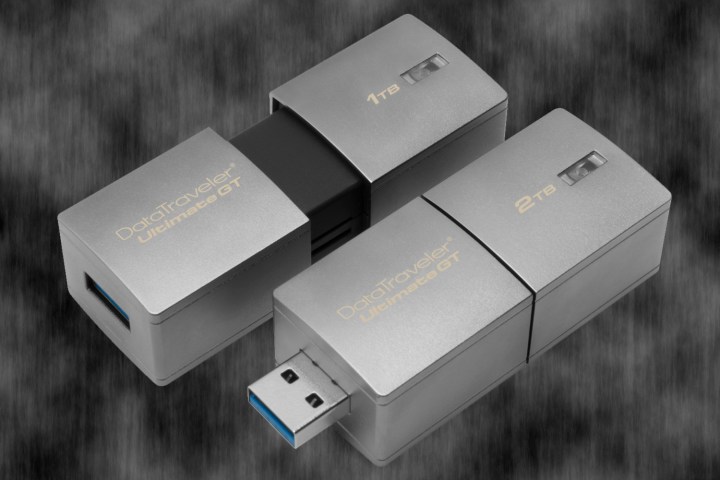
The DataTraveler Ultimate Generation Terabyte offers both one and two terabyte storage capacities, with a USB 3.1 interface. It measures in at 72 millimeters x 27mm x 21mm, making it a supremely micro storage solution, despite the monstrous capacity.
Key Specs
- 1TB, 2TB capacity
- USB 3.1 interface
- Measures 72mm x 26.94mm x 21mm
- Five year warranty
To give us some context for two terabytes, Kingston’s release mentions that its new DataTraveler can store as much as 70 hours of 4K video. To keep all of that data protected too, it’s encased it in a zinc-alloy chassis, which gives it some shock resistance.
“At Kingston, we push the limits of what’s possible,” said Jean Wong, Flash business manager. “With the DataTraveler Ultimate GT, we empower users to increase their data storage mobility in a highly manageable form factor. This is a terrific follow up to our 1TB drive released in 2013, and by doubling the capacity, users can store and carry even larger amounts of data easily.”
Operating system support runs right through Windows 10, 8.1 and 7, as well as Linux, Mac OS 10.9 or later and Chrome.
Although there are some who are a little wary of larger flash drives due to concerns of reliability, Kingston backs up its new sticks with a five year warranty, with free tech-support, so these drives should last well into your next upgrade.
They won’t be cheap though. We don’t have a price for any territory’s release yet, but expect to spend at least a few hundred. It will start shipping out in February in both one and two terabyte capacities.



